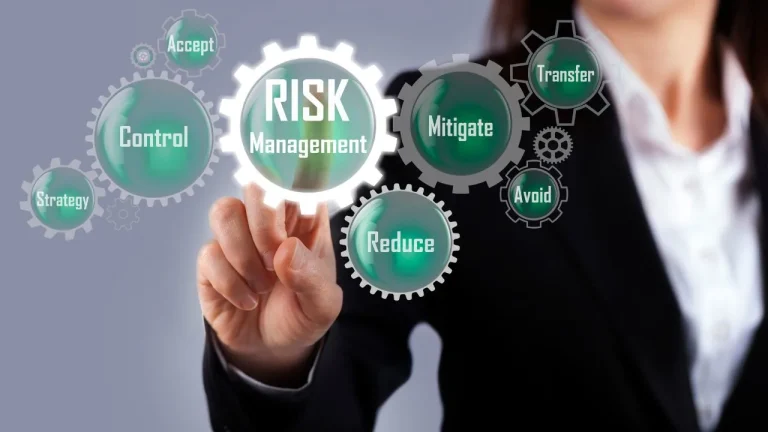In today’s fast-paced and competitive business environment, startups are constantly striving to build innovative products, services, and ideas that set them apart from their competitors. One of the most valuable assets a startup can possess is its intellectual property (IP), which includes patents, trademarks, copyrights, and trade secrets. Intellectual property serves as a cornerstone for establishing a unique market position, safeguarding innovations, and attracting investors. However, navigating the complex world of IP can be a daunting task, especially for early-stage startups with limited resources and expertise.
Fortunately, recent advancements in technology have given rise to a new generation of tools and platforms that make IP management more accessible, cost-effective, and streamlined. These emerging tools empower startups to better protect their innovations, track their IP assets, and enhance their competitive advantage. In this article, we will explore some of the most promising tools for intellectual property management, focusing on how they benefit startups and provide them with an edge in today’s innovation-driven economy.
1. AI-Powered IP Search and Analysis Tools
One of the most challenging aspects of managing intellectual property is ensuring that a startup’s innovations do not infringe on existing patents, trademarks, or copyrights. Conducting a comprehensive IP search is essential to avoid costly legal disputes and to assess the viability of new ideas. Traditionally, this has been a time-consuming and expensive process, requiring skilled professionals to comb through large databases.
Enter AI-powered search and analysis tools, which leverage machine learning algorithms and natural language processing to automate and expedite the process. These tools can scan vast amounts of IP data, including patents, trademarks, and scientific papers, to identify potential conflicts and opportunities for new inventions. Startups can use these tools to conduct thorough searches of patent databases, check for existing trademarks, and identify emerging trends in their industry.
Platforms such as PatSnap, Clarivate Analytics, and Innography are leading the way in offering AI-based IP analytics. These tools not only allow startups to identify prior art and competitors’ IP portfolios but also provide valuable insights into the commercial potential of their own innovations. By leveraging AI, startups can make data-driven decisions about which areas of IP to pursue, avoid unnecessary legal battles, and strategically position their products in the market.
2. Blockchain for IP Protection and Tracking
Blockchain technology, known for its use in cryptocurrency transactions, is increasingly being explored for its potential in securing and tracking intellectual property. The decentralized and tamper-proof nature of blockchain makes it an ideal tool for protecting IP assets, ensuring that ownership and usage rights are transparent, verifiable, and immutable.
Startups can use blockchain to register and timestamp their intellectual property, such as patents, designs, and creative works, creating an unalterable digital record of ownership. This provides a strong defense against IP theft and disputes, as the blockchain ledger serves as an indisputable proof of when the innovation was created and by whom.
Several platforms are already leveraging blockchain for IP management. IPwe, for instance, uses blockchain to create a global IP registry that enables businesses to register their patents securely and transparently. Similarly, Ascribe offers a blockchain-based platform that helps artists and creators protect their digital works, allowing them to track usage, licensing, and ownership rights. By incorporating blockchain technology, startups can improve the security and efficiency of their IP management while enhancing their credibility in the eyes of investors, partners, and customers.
3. Cloud-Based IP Management Platforms
Managing a portfolio of intellectual property assets can become increasingly complex as a startup grows and develops multiple products, technologies, or brands. Traditional methods of tracking IP, such as spreadsheets and manual databases, are often inefficient and prone to errors. In response to these challenges, cloud-based IP management platforms have emerged as a powerful solution.
These platforms provide startups with a centralized, accessible repository for managing all aspects of their IP portfolio, from filing and registration to renewal and enforcement. Cloud-based IP tools allow businesses to track deadlines, monitor IP usage, and stay informed about legal developments affecting their assets. Additionally, they offer features such as document storage, collaboration tools, and automated alerts to ensure that IP rights are protected and deadlines are met.
Platforms like Docketing, Anaqua, and Patentsafe are revolutionizing IP management for startups by offering user-friendly, cloud-based systems that streamline the process of managing patents, trademarks, and other IP assets. With these tools, startups can ensure that they stay organized and compliant without the need for costly legal teams or manual processes.
4. IP Licensing and Monetization Platforms
For startups looking to maximize the value of their intellectual property, licensing and monetization are key strategies. Licensing allows companies to generate revenue by granting third parties the right to use their IP in exchange for royalties, while monetization strategies may include selling or commercializing IP assets outright. However, the process of negotiating and managing IP licenses can be complex and legally challenging.
Emerging IP licensing and monetization platforms simplify this process by connecting startups with potential licensees, providing tools for contract management, and ensuring compliance with licensing agreements. These platforms also offer market insights, such as royalty rates and industry trends, to help startups negotiate favorable terms and maximize the financial value of their IP.
Royalty Exchange and IPwe’s IP Market are examples of platforms that facilitate IP licensing and monetization by offering marketplaces where startups can list their IP assets and find interested parties. These platforms help startups unlock the commercial potential of their intellectual property while providing them with the resources and tools needed to manage the licensing process effectively.
5. Patent Analytics and Valuation Tools
Startups with patents often struggle to determine the true value of their IP assets, especially if they are seeking investment or planning to exit. Understanding the market value of a patent or a portfolio of patents is critical for making informed business decisions. Patent analytics and valuation tools provide startups with valuable insights into the worth of their IP, helping them to evaluate whether they should pursue further commercialization, sell, or license their patents.
Platforms like PatentSight, IFI Claims, and Gray’s Patent Analytics offer patent analytics tools that can help startups assess the quality, impact, and market potential of their patents. These tools evaluate factors such as citation counts, patent strength, technological relevance, and commercial viability, providing a data-driven approach to IP valuation.
By utilizing patent analytics, startups can make better decisions regarding their IP assets, prioritize their innovation efforts, and communicate the value of their intellectual property to potential investors, partners, and buyers.
6. IP Enforcement and Litigation Tools
Enforcing intellectual property rights is an essential aspect of protecting innovations from infringement, but pursuing litigation can be costly and time-consuming. Startups, which often operate with limited resources, need efficient ways to detect and combat IP violations without draining their budgets.
Emerging tools for IP enforcement and litigation management help startups monitor the market for potential infringements, streamline the process of filing complaints, and track legal proceedings. These tools leverage machine learning and AI to identify potential violations and automate the process of sending cease-and-desist letters or filing legal claims.
Luminance and TrademarkNow are examples of platforms that provide tools for automating IP enforcement. They offer advanced algorithms to track trademarks and patents across global markets, identify infringement risks, and streamline the process of managing IP disputes.
Conclusion
Intellectual property is a vital asset for any startup, and protecting it is crucial for long-term success. Fortunately, emerging tools for IP management are making it easier for startups to safeguard their innovations, streamline IP processes, and unlock the full potential of their IP assets. From AI-powered search and analytics to blockchain-based protection and cloud-based management platforms, these tools empower startups to operate more efficiently, reduce risks, and maximize the value of their intellectual property.
By leveraging these cutting-edge tools, startups can confidently navigate the complex world of intellectual property, protect their innovations, and position themselves for growth and success in an increasingly competitive marketplace.




